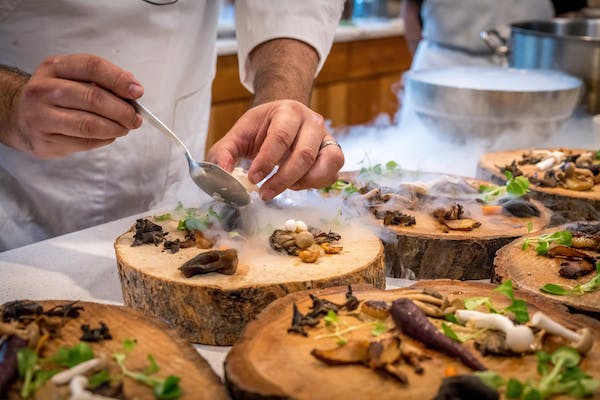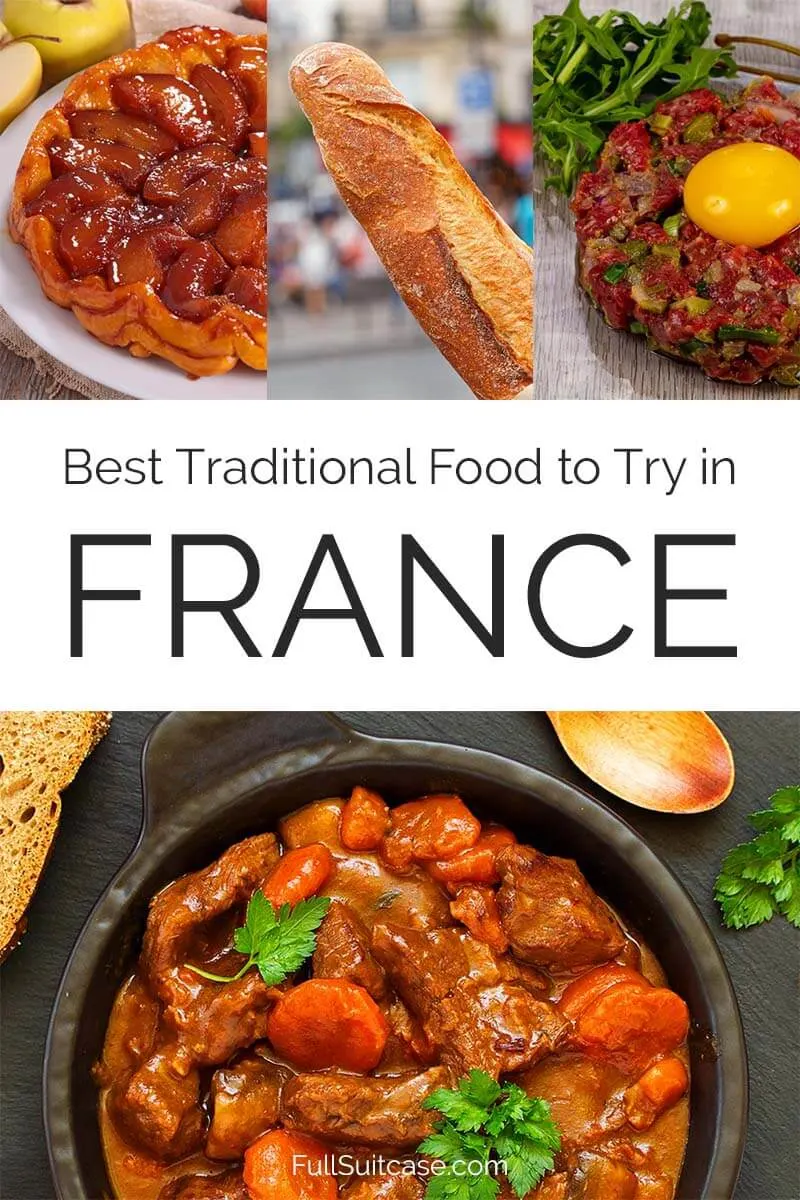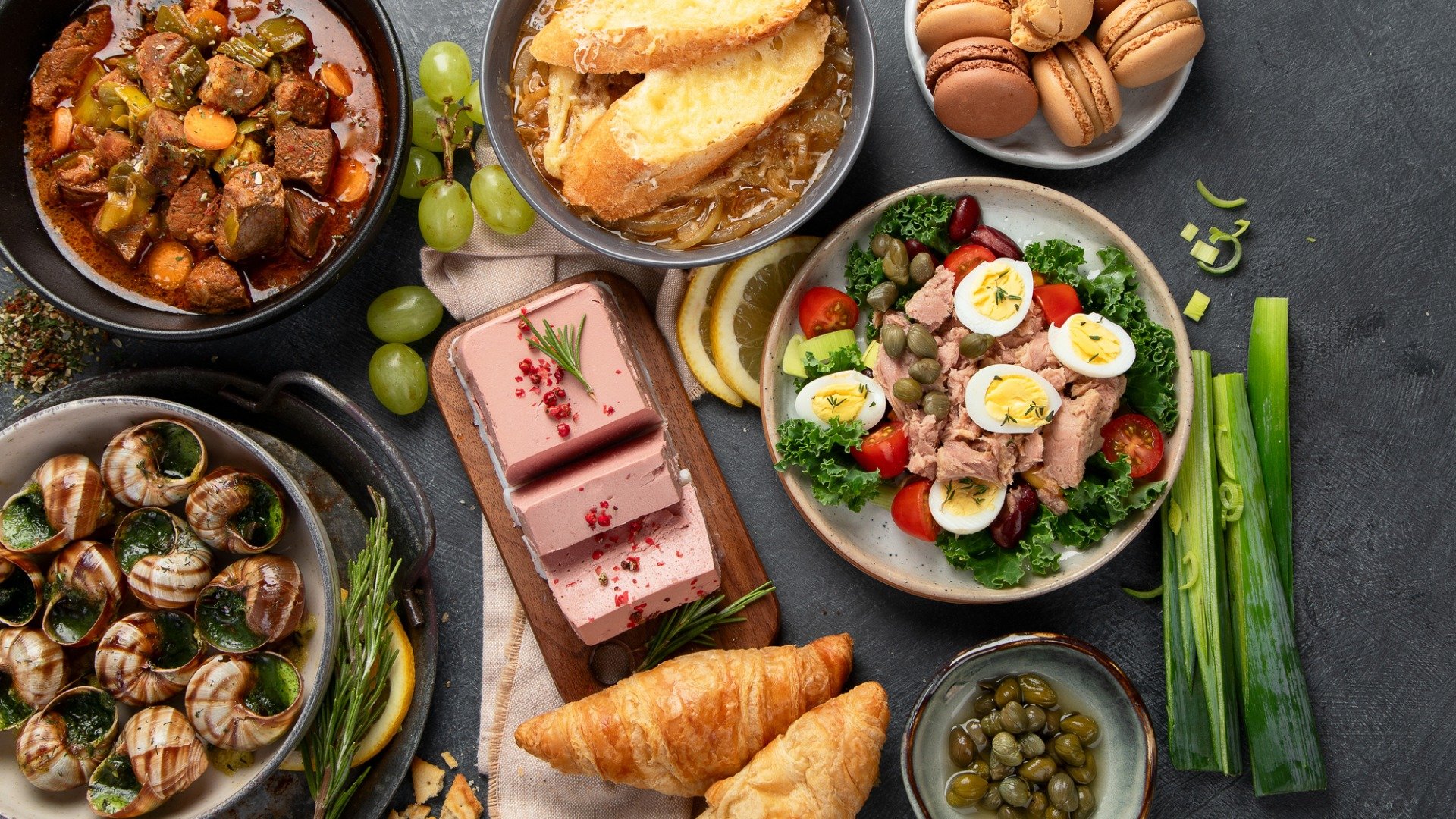
Introduction
Overview of French Cuisine
French cuisine is celebrated for its rich flavors, artistic presentation, and time-honored traditions. It’s a culinary art form that embodies both simplicity and sophistication, ranging from rustic dishes like coq au vin to gourmet delights like foie gras. Each recipe tells a story of regional ingredients and cultural heritage.
Significance of French Culinary Influence
The impact of French cuisine on global culinary practices is immense. Many chefs and food enthusiasts draw inspiration from its techniques and flavor profiles. Its principles have forged the foundation for culinary schools and restaurants worldwide, making French cuisine a touchstone in global dining culture.
Key influences include:
- The refinement of cooking techniques
- Emphasis on seasonality and quality ingredients
- The rise of gourmet and haute cuisine
With each dish, French cuisine not only tantalizes the taste buds but also enriches cultural conversations around the dinner table.

History of French Gastronomy
Evolution of French Cuisine
The journey of French cuisine is a captivating tale of evolution, influenced by geography, culture, and historical events. Its transformation can be traced from the simplistic fare of medieval times to the sophisticated dishes served in modern Michelin-starred restaurants.
Highlights of this evolution include:
- Medieval Influences: Hearty meats and spices dominated, showcasing the feasts enjoyed by nobility.
- Renaissance Era: The introduction of new ingredients from the New World, like tomatoes and chocolate, broadened culinary horizons.
- 19th Century: The establishment of haute cuisine, emphasizing technique and presentation.
Notable Figures in French Culinary History
Throughout its evolution, several culinary pioneers have left an indelible mark on French gastronomy. For example,
- Georges Auguste Escoffier: Known as the father of modern cooking, he revolutionized French cuisine and created the brigade system in kitchens.
- Julia Child: Her accessible take on French cooking introduced many in the U.S. to the delights of French gastronomy.
These influential figures, among others, highlight how French cuisine continuously adapts, yet retains its elegance and flair. Through their passion and innovation, they inspire both home cooks and professionals alike.

Regional Flavors of France
Culinary Delights of Provence
Provence is a colorful tapestry of flavors, where the sun-kissed countryside meets the Mediterranean. Known for its vibrant herbs and olive oils, the region offers dishes like ratatouille and bouillabaisse. Each bite evokes the aromas of lavender fields and rustic markets.
- Key Ingredients:
- Fresh tomatoes
- Garlic
- Lavender
Gourmet Offerings from Normandy
Heading north, Normandy shines with its dairy delights and seafood. The area is renowned for creamy Camembert cheese, fresh oysters, and hearty apple cider. One memorable experience is savoring a warm apple tart paired with Normandy butter—it’s pure indulgence.
- Signature Dishes:
- Coq au cidre (chicken in cider)
- Moules marinières (mussels in white wine)
Savory Specialties in Alsace
Alsace offers a delightful blend of French and Germanic influences, resulting in unique culinary specialties. Dishes like choucroute garnie (sauerkraut with sausages) and tarte flambée exemplify this fusion. Wandering through its picturesque villages, one can taste the region’s rich history in every bite.
- Must-try Flavors:
- Smoky meats
- Spices like caraway and cumin
From the aromatic herbs of Provence to the hearty dishes of Alsace, each region of France presents its own distinctive culinary identity that tells a story of soil, climate, and culture.

French Cooking Techniques
Classic French Cooking Methods
Understanding classic French cooking techniques is essential for any aspiring chef or cooking enthusiast. These methods form the backbone of many culinary practices worldwide, blending precision with artistry. Techniques such as:
- Sautéing: Quickly cooking food in a small amount of oil or butter, enhancing flavors.
- Braising: Slow-cooking meat in liquid for tenderness and depth.
- Poaching: Gently cooking food in simmering liquid, ideal for eggs and fish.
These techniques can transform simple ingredients into extraordinary dishes, showcasing the elegance of French cuisine. For instance, once while preparing a coq au vin, I discovered how braising elevates the flavors to new heights.
Essential Ingredients in French Cuisine
At the heart of French cooking are the essential ingredients that contribute to its rich flavor profiles. Whether in a rustic farmhouse or a Michelin-starred restaurant, you’ll find staples such as:
- Butter: A foundational fat for richness in sauces and pastries.
- Herbs de Provence: A fragrant blend of dried herbs like thyme and rosemary, perfect for seasoning.
- Quality Cheese: Varieties like Brie and Roquefort that add complexity and taste.
These ingredients are not just components; they are symbols of French culture and culinary pride. Their thoughtful combination and preparation create the signature dishes that delight the palate and bring warmth to the dining experience.

Popular French Dishes
Iconic French Dishes to Try
When it comes to iconic French dishes, the offerings are as diverse as the regions they come from. Each dish presents a unique taste of French culture and tradition. Here are some must-tries:
- Coq au Vin: Chicken slowly braised in red wine, showcasing rich flavors and a comforting texture.
- Ratatouille: A vegetable medley that embodies the essence of Provence, highlighting seasonal produce.
- Boeuf Bourguignon: A hearty beef stew simmered with red wine, perfect for cozy evenings.
One comforting memory is sharing a homemade boeuf bourguignon with friends, sitting around the table while the aromas filled the air.
Traditional French Desserts
No journey through French cuisine would be complete without indulging in traditional desserts. French pastries and sweets are renowned for their elegance and decadence:
- Crème Brûlée: A silky custard topped with a crisp layer of caramelized sugar, offering a delightful contrast in textures.
- Tarte Tatin: An upside-down caramelized apple tart that’s both easy to make and utterly delicious.
- Macarons: Colorful almond meringue cookies with a creamy filling, perfect for those with a sweet tooth.
Each dessert tells a story of tradition and artistry, making it a treat not just for the palate, but also for the soul. Savoring a warm tarte tatin while reminiscing about trips to Paris exemplifies how food can connect people and create lasting memories.

French Wine and Cheese
Wine Regions of France
France is synonymous with exquisite wines, known for their unique characteristics derived from various regions. Each area cultivates distinct grape varieties and produces compelling flavors. Here are some notable wine regions to explore:
- Bordeaux: Renowned for its full-bodied red wines, particularly blends of Cabernet Sauvignon and Merlot.
- Burgundy: Famous for elegant Pinot Noir and Chardonnay, known for their complexity.
- Champagne: The sparkling wine capital, producing bubbly delights perfect for celebrations.
During a recent vineyard tour in Bordeaux, tasting samples straight from the barrel was both enlightening and delightful, immersing me in the rich history of winemaking.
Cheese Varieties in French Culture
No exploration of French wine would be complete without pairing it with cheese. France boasts a treasure trove of cheese varieties, each with regional distinctions and traditional craftsmanship. Some must-try cheeses include:
- Camembert: A creamy, soft cheese with a rich flavor that pairs wonderfully with a glass of Pinot Noir.
- Roquefort: A blue cheese known for its sharp, tangy notes, perfect with sweet white wines.
- Comté: A hard cheese with nutty flavors, complementing many red wine varieties.
Experiencing a cheese tasting while sipping local wine can be an unforgettable culinary adventure. These pairings not only enhance the flavors but also reflect the deep cultural bond between wine and cheese in French society.

Culinary Experiences in France
Dining Etiquette in France
Dining in France is an art that goes beyond just eating; it’s about savoring the experience. Understanding French dining etiquette can elevate your meals and show respect for the culture. Here are some key points to consider:
- Table Manners: Keep both hands on the table (but not your elbows) during the meal.
- Wine Etiquette: Never fill your wine glass all the way; a quarter or one-third full is ideal.
- Courses: Expect a multi-course meal, and embrace the slow-paced dining experience that encourages conversation.
I vividly recall my first meal in Paris, feeling both excited and nervous about getting the etiquette right. The friendly staff guided me through the intricacies, making it a memorable culinary adventure.
Food Markets and Culinary Tours
To truly immerse oneself in French cuisine, exploring local food markets and culinary tours is a must. These experiences offer a hands-on connection to the culture and flavors of France. Notable experiences include:
- Local Markets: Vibrant markets like Marché Bastille in Paris provide fresh produce, artisanal cheeses, and baked goods. Sampling local bites while chatting with vendors is an enchanting way to spend a morning.
- Culinary Tours: Joining a guided food tour, such as those in Lyon, lets you discover hidden gems, taste regional specialties, and learn the stories behind each dish.
During a culinary tour in Lyon, I was amazed by the depth of flavor in each dish and the passionate stories shared by local chefs. This immersion into the heart of France’s culinary scene created a lasting appreciation for its rich food culture and traditions.

French Michelin-starred Restaurants
Fine Dining Experiences in France
Dining at a Michelin-starred restaurant in France is nothing short of an extraordinary experience. These establishments offer a blend of culinary artistry, exceptional service, and an enchanting atmosphere. From the moment you step inside, you are transported into a world where every detail is meticulously curated.
- Ingredient Quality: Expect only the freshest, seasonal ingredients.
- Presentation: Each dish is a work of art, carefully plated to please the eye.
- Atmosphere: Ambiance ranges from opulent to cozy, providing a unique dining setting.
I still remember dining at a Michelin-starred bistro in Paris, where the ambiance complemented the sophistication of each dish, leaving me in awe.
Michelin-starred Restaurants to Visit
If you’re planning to indulge in fine dining while in France, consider these acclaimed Michelin-starred restaurants:
- Le Meurice (Paris): With a focus on classical French cuisine, this three-star restaurant, helmed by celebrated chef Alain Ducasse, offers an unforgettable culinary journey.
- L’Arpège (Paris): Renowned for its vegetable-driven menu, chef Alain Passard showcases creativity and a robust connection to his garden.
- Mirazur (Menton): This stunning restaurant, set against the backdrop of the Mediterranean, has earned three stars for its fresh, flavorful dishes inspired by the surrounding landscape.
Visiting these gastronomic temples creates an adventure beyond just food; it’s a celebration of art, culture, and human connection through the shared experience of dining. Each visit not only satiates hunger but also nourishes the soul with inspiration from culinary excellence.

Bringing France to Your Kitchen
French Recipes to Cook at Home
You don’t need to travel to France to savor its culinary delights; you can bring a piece of France to your kitchen with a few delightful recipes. Start with classics that are accessible and sure to impress:
- Coq au Vin: A deliciously rich chicken dish braised in red wine, ideal for cozy dinners.
- Ratatouille: A vibrant vegetable medley that showcases fresh produce and herbs, perfect for a wholesome side dish.
- Crème Brûlée: A creamy custard dessert topped with caramelized sugar; it’s easier to make than you’d think!
I remember the first time I tried making crème brûlée at home—cracking the caramelized top with a spoon felt like a mini celebration!
Tips for Mastering French Cuisine
To truly master French cooking, consider these helpful tips:
- Use Fresh Ingredients: Quality matters. Fresh, seasonal ingredients elevate your dishes significantly.
- Practice Techniques: Work on fundamental techniques like sautéing, braising, and knife skills to enhance your culinary repertoire.
- Be Patient: French cooking often requires time and precision; take the time to embrace the process.
Creating a French-inspired meal at home can be a delightful journey. By incorporating these recipes and tips, you not only connect with France’s culinary heritage but also build your skills and confidence in the kitchen. Each dish prepared becomes a beautiful homage to the rich traditions of French gastronomy, allowing you to share that joy with family and friends.

Conclusion
Summary of French Culinary Journey
Embarking on a journey through French cuisine is like uncovering layers of rich culture and history. From the vibrant flavors of regional dishes to the meticulous artistry of fine dining, each experience teaches us the beauty of food:
- Regional Diversity: Each area in France contributes unique flavors and dishes.
- Culinary Techniques: Mastering classic methods opens the door to endless culinary creativity.
Reflecting on my travels through France, every meal—from quaint bistros to Michelin-starred restaurants—has left a lasting impression, highlighting the deep connection between food, tradition, and community.
Culinary Inspirations from France
France inspires cooks and food lovers around the globe, igniting a passion for high-quality ingredients and classic techniques. Whether you’re savoring a fresh baguette or attempting a delicate soufflé, French cuisine celebrates simplicity and elegance.
- Experiment at Home: Try incorporating French recipes into your weekly meal planning.
- Stay Curious: Explore the stories behind each dish and discover new flavors.
Ultimately, the influence of French gastronomy transcends borders, inviting everyone to enjoy its artistry. By embracing these culinary inspirations, we create not just meals but memorable experiences that warm the heart and bring loved ones together. Let the journey continue, one delicious bite at a time!




